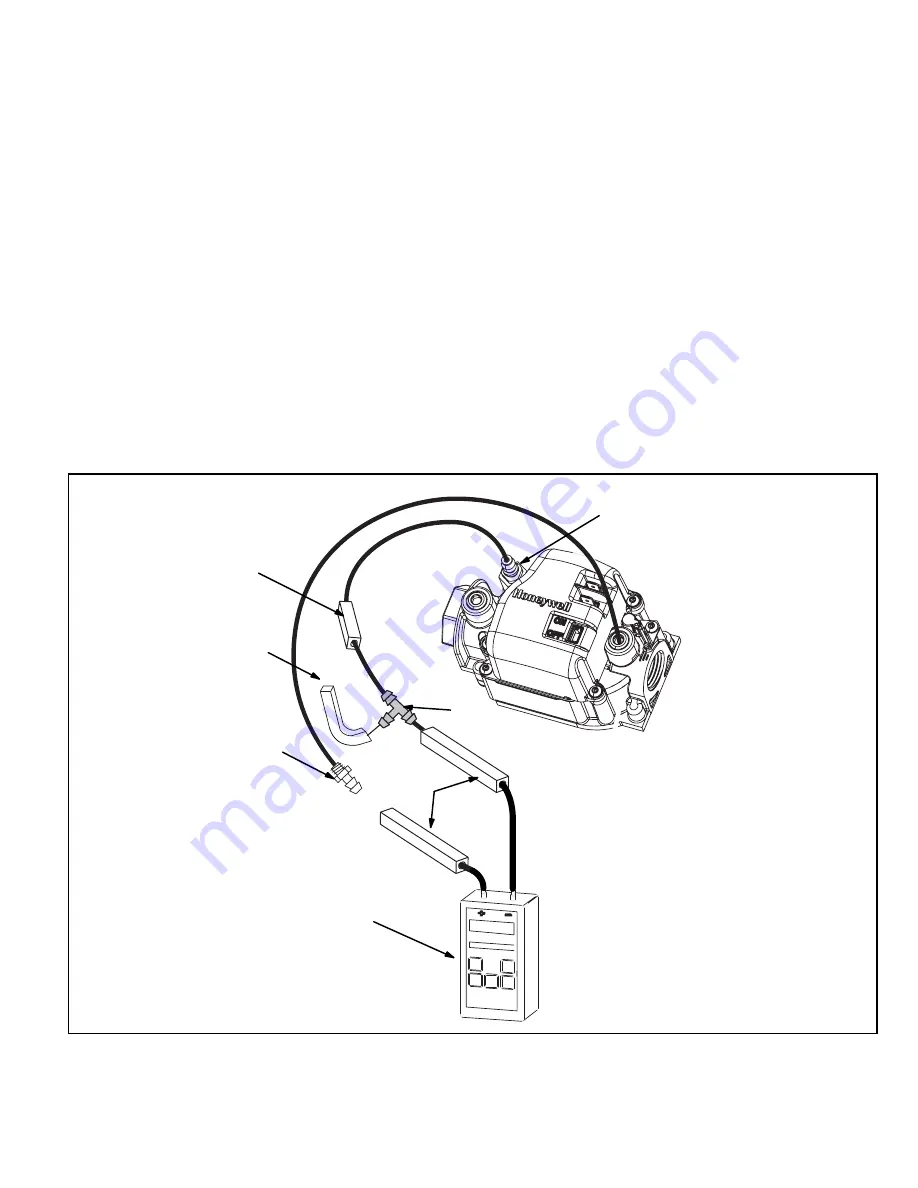
508134-01
Issue 2045
Page 45 of 56
Supply Pressure Measurement
When testing supply gas pressure, use the 1/8” N.P.T.
plugged tap located on the gas valve to facilitate test gauge
connection. See Figure 49. Check gas line pressure with
unit firing at maximum rate. Low pressure may result in
erratic operation or underfire. High pressure can result in
permanent damage to gas valve or overfire.
On multiple unit installations, each unit should be checked
separately, with and without other units operating. Supply
pressure must fall within range listed in Table 16.
Manifold Pressure Measurement
After line pressure has been checked and adjusted, check
manifold pressure. Move pressure gauge to outlet pressure
tap located on unit gas valve (GV1).
Checks of manifold pressure are made as verification of
proper regulator adjustment.
1.
Connect the test gauge positive side “+“ to manifold
pressure tap on gas valve.
2.
Tee into the gas valve regulator vent hose and connect
to test gauge negative “-”.
3.
Start unit and let run for 5 minutes to allow for steady
state conditions.
4.
After allowing unit to stabilize for 5 minutes, record
manifold pressure and compare to value given in
5.
Shut unit off and remove manometer as soon as an
accurate reading has been obtained. Take care to
remove barbed fitting and replace threaded plug.
6.
Start unit and perform leak check. Seal leaks if found.
(+)
(−)
Gas Valve Regulator
Vent Hose
(to burner box)
2” Long Square Tubing
(remove for manifold adjustment)
Tee
10” Long
Square
Tubing
Measuring Device
Barbed Fitting
Manifold Pressure Outlet
Negative Barbed Fitting
(remove for manifold adjustment)
Figure 51.












































